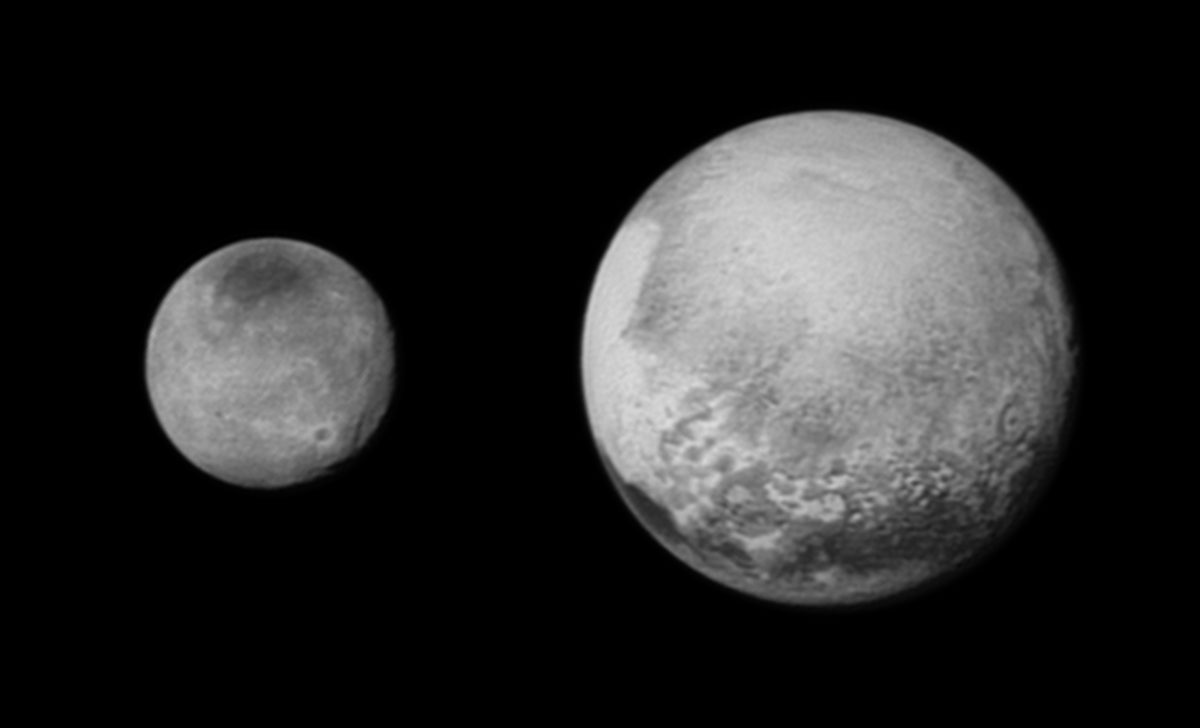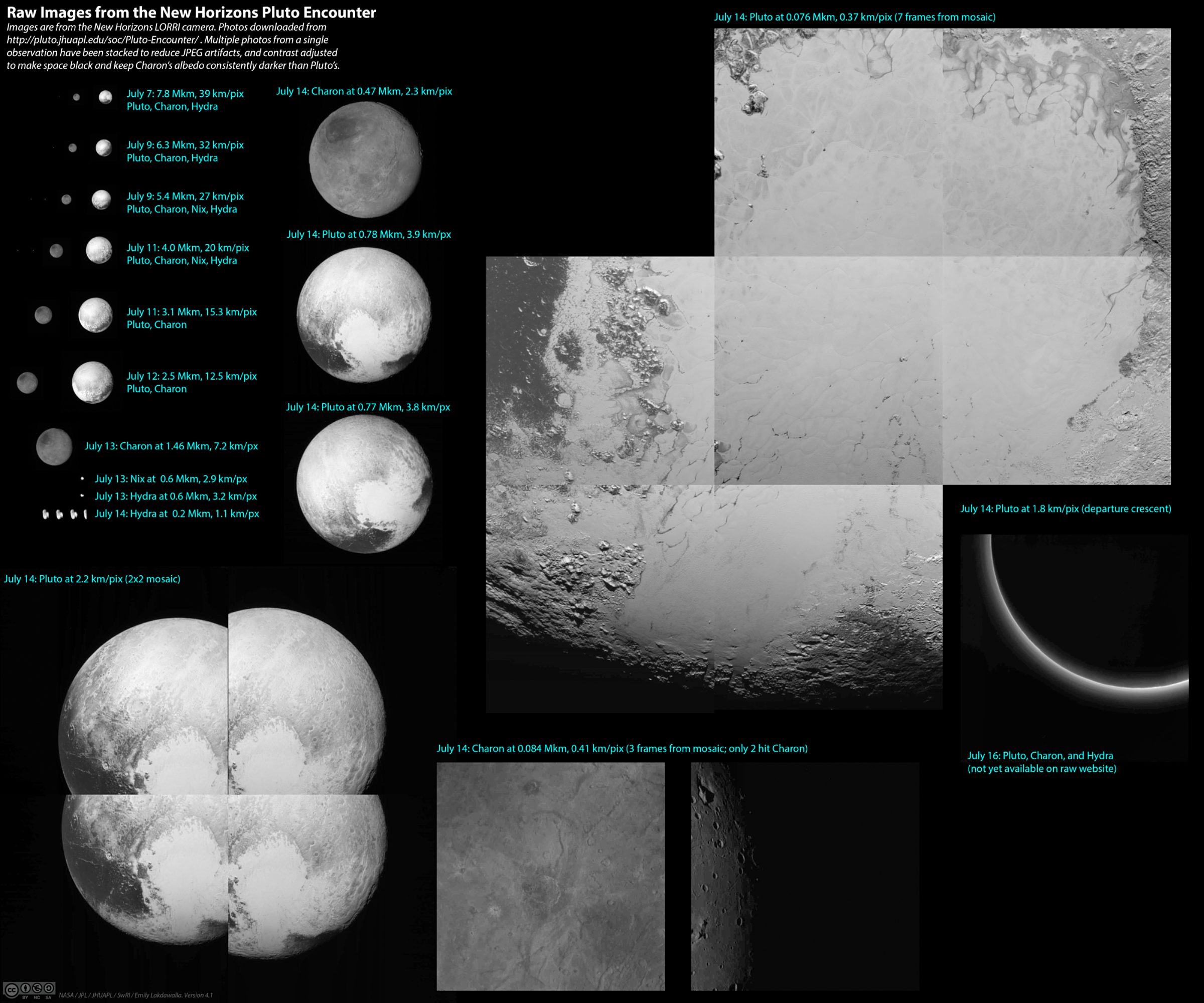Emily Lakdawalla • Jul 13, 2015
Pluto minus one day: Very first New Horizons Pluto encounter science results
Before I mention the science, here is the very latest of the images from New Horizons:

At a press briefing this morning, New Horizons principal investigator Alan Stern divulged some extremely preliminary first science results from the New Horizons Pluto encounter. Without further ado:
New Horizons images have dramatically reduced uncertainty in Pluto's diameter. Stern reported Pluto's radius to be 1185 +/- 10 kilometers, so its diameter is 2370 +/- 20 km. Implications of the new diameter:
- Pluto is larger than Eris, and is therefore the largest known object in the Kuiper belt by diameter. Eris lacks an atmosphere so we have very precise measurements of its diameter from stellar occultations: 2336 +/- 12 km.
- A larger diameter than thought means a lower density than thought, which means it has a higher proportion of ice to rock than thought. At the moment these comparisons are all qualitative; we'll see quantitative ones eventually. It makes the density contrast between Pluto and Eris even greater, hinting at very different histories for the two worlds. (Eris is 27% more massive than Pluto.)
- A larger diameter than thought also makes its atmosphere thinner than thought; the troposhere is shallower than models have predicted. It's going to be a while before atmospheric scientists determine the implications of that for their models of Pluto's atmosphere.
The diameter will be even better known in a couple of days, once we get two much higher-resolution global images of Pluto down from the spacecraft. Stern also mentioned that they applied the techniques they used to measure Pluto's diameter to Charon (whose diameter is very well constrained by stellar occultations at 602.4 +/- 1.6 kilometers), and the New Horizons measurements "got the right answer."
New Horizons compositional measurements have confirmed that Pluto has a polar cap made of methane and nitrogen ices. A cap was suspected, but measurements taken over the weekend are high-resolution enough to resolve the pole separately from the equatorial regions and determine that ices are present. Stern said: "These first compositional measurements where we could resolve different regions show us that the polar regions are compositionally very different from the dark regions. For example, the methane absorption bands are much weaker in the dark regions."
New Horizons has detected ionized nitrogen escaping from Pluto's atmosphere five days before closest approach. This is significantly earlier (farther away, around 6 million kilometers) than they expected to detect the atmosphere; they expected to see it 24 to 48 hours (1 to 2.5 million kilometers) out. Seeing the atmosphere so much farther from Pluto suggests (Stern said) either that the atmospheric escape rate is higher than thought, or else the mechanism is different than thought. Later in the briefing, he expanded on this: he said "either the source is stronger (the escape rates are stronger), or the conversion from neutrals to ionized species is more efficient, or there is some mechanism that's concentrating the ionized species along the flight path. At Jupiter, we found that the ionosphere was very inhomogeneous. We found that there were regions of enhanced concentration of sulfur and oxygen. Whether Pluto has that is a great question; we don't have the answer and it may take a long time to get the answer."
Here is the latest composite of images returned -- and to be returned -- by New Horizons. The images at the top of this post are the last optical navigation images; at their original resolution they would have showed Pluto and Charon at 189 and 94 pixels across, respectively. I will add them to this composite once the raw images have been posted. Very late tonight, the mission will receive a Charon image about twice as good as this one, and a much, much larger Pluto image.

Support our core enterprises
Your support powers our mission to explore worlds, find life, and defend Earth. You make all the difference when you make a gift. Give today!
Donate

 Explore Worlds
Explore Worlds Find Life
Find Life Defend Earth
Defend Earth

